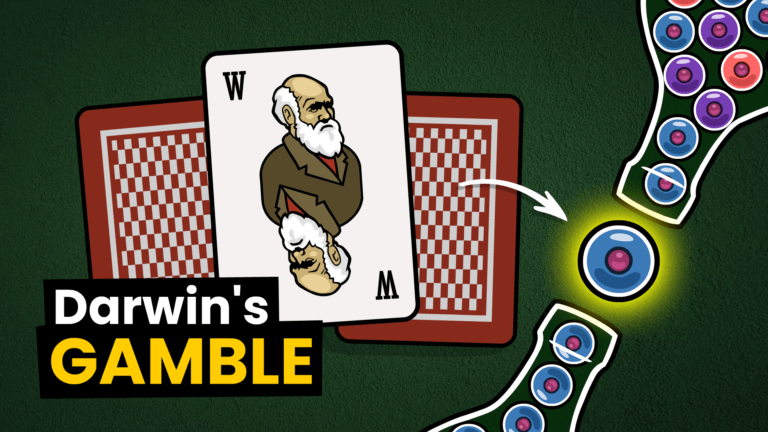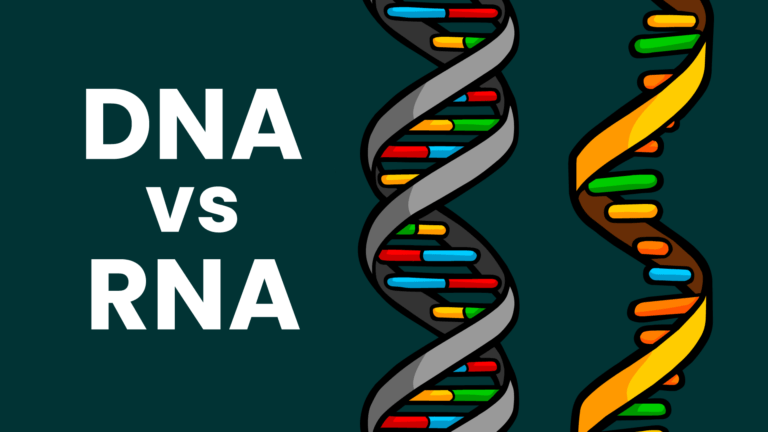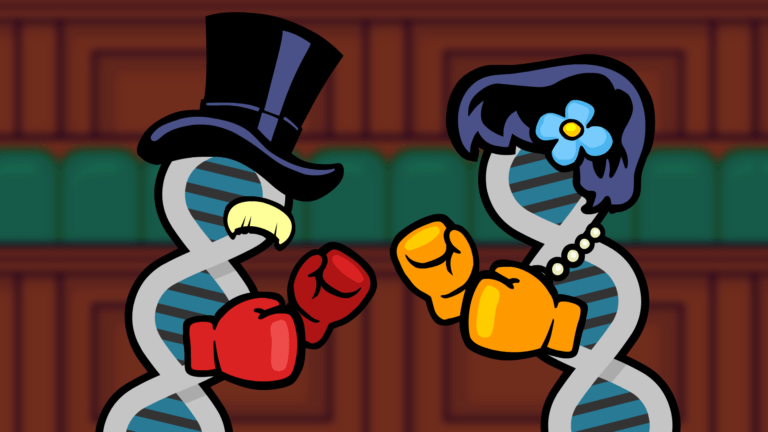In the first animation of our two part series on the origin of genetic information, we go over point mutations. If you haven’t seen the animation, please do so before reading further:
Unlike gene duplications that increase the overall length of an individuals genome, point mutations act as mere “edits”. A point mutation is a natural change in a DNA or RNA sequence that only effects a single nucleotide – it changes just one letter. These mutations can be passed from parent to child. Though point mutations do not increase the total amount of information in an individual’s genome, they do increase the total amount of information within a population. They create new alleles.
In the animation we saw 4 examples of beneficial point mutations. When I say “beneficial”, I mean that each mutation increased the ability of the organism to survive and reproduce within it’s specific environment. The first two examples were directly observed in bacteria by scientists in the lab and allowed those bacteria to better reproduce in the laboratory setting. The third is a case found in domestic dogs which allowed them to better impress pet owners and thus, reproduce more often in captivity. The last example was not observed directly, but was deduced through comparative genetics of closely related wild animals.
Below we will look in greater detail at each example in the animation, and you will find links to the relevant papers if you decide you want to dive into the primary literature.
Example 1: an observed point mutation is shown to increase the reproduction speed of E. coli in lab conditions
Relevant Papers:
- Evolution of Penicillin-Binding Protein 2 Concentration and Cell Shape during a Long-Term Experiment with Escherichia coli
- Phenotypic and Genomic Evolution during a 20,000-Generation Experiment with Bacterium Escherichia coli
Dr Richard Lenski has been studying the evolution of bacteria in an experiment which has now been running for over 25 years! It’s called the E. coli Long-term Experimental Evolution Project. Our first mutation example in the film outlines one of the many discoveries made by Lenski’s lab—a mutation known as allele pbpA-5. The mutation increased the reproduction rate of E. coli within the lab environment, allowing it to eventually out-compete all non-mutant individuals. This mutation is detailed in the first paper referenced above.
Results strongly suggest that the pbpA-5 mutation occurred sometime after generation 500, and achieved total takeover (also known as fixation) by generation 2,000. In a previous paper (the second one cited above) they report the estimated generation rate for their non-mutant bacteria as being ~6.6 generations per day. Assuming the mutation may have occurred as early as generation 501, and takeover occurred as late as generation 2,000, the takeover would have occurred in less than one year – 228 days at most.
This mutation made the bacteria extremely efficient at reproduction in the lab where the mutation evolved. It’s important to note, however, that this mutation seems to have weakened the bacteria’s ability to survive in several wild environments. Trade-offs like this are typical over evolutionary time and especially typical of point mutations—that which is beneficial in one environment might be a disadvantage in another.
Example 2: Gain-of-Function Mutation Observed In Salmonella Bacteria
Relevant Papers:
- The Metabolism of D-Arabinose by Salmonella typhimurium
- Experimental Evolution, Loss-Of-Function Mutations and the First Rule of Adaptive Evolution
In 1976, David C. Old and Robert P. Mortlock reported a mutant version of Salmonella which evolved in one of their labs. The specific mutation was never isolated in the DNA due to sequencing limitations of that era, but the ease at which it evolved (they were able to coax it’s evolution several times when starting with non-mutant Salmonella) suggested that it was a simple point mutation. The mutated strain of Salmonella typhimurium had maintained the the ability to detect and digest its normal food source (fucose) and a gained the ability to to detect and digest a new foreign food source (d-arabinose) which wild-type Salmonella can not recognize as food.
According to Michael Behe who revisited the discovery in 2010, this mutation is an example of a what he calls a “gain-of-functional-coded-element” mutation. This means that not only is it a gain of information for the population, like many point mutations are, it’s also a gain of information for the individual. It qualifies as such because the organism’s regulatory protein that initiates digestion appears to have gained an additional binding site for the new food source.
Of this mutation Behe says:
“An interesting variation on this pattern is reported in Chapter 5 by Lin and Wu (1984) [the book then refers to the 1976 study]. Mutants of E. coli and S. typhimurium (S. enterica var Typhimurium) gain the ability to metabolize the unusual substrate d-arabinose by altering the specificity of a regulatory protein. Normally, the enzyme fucose isomerase is induced in these bacteria when some fucose enters the cell and binds to a positive regulatory protein, which then turns on the gene for the isomerase. The regulatory protein of some mutants, however, responds to both fucose and d-arabinose. It turns out that the unusual substrate d-arabinose can be metabolized by enzymes of the fucose pathway, and, because the protein has apparently gained an additional binding site for the novel substrate, the mutation is classed as gain-of-FCT [functional-coded-element].”
See Michael Behe’s paper for more information. In the paper he points out that most point mutations either modify existing information (meaning no net gain of info for the individual, only for the population) or they result in a loss of function by break a binding site which is not needed in a particular environment.
Example 3: Evolution of new information for long hair in domestic dogs
Relevant Papers:
This study aimed to discover the mutations which code for three unique fur traits in domestic dogs:
- Furnishings (abnormally long facial hair) like that found in the Schnauzer
- Long fur like that found in the Rough Collie
- Curly fur like that found in the Poodle
Various combinations of these three traits are responsible for almost all variation of fur type found in dogs.
In our film we focus on the second mutation—long fur—which appears to have been caused by a single point mutation in the FGF5 gene. This mutation turned a single G to a T in the genetic sequence. Evidence suggests that this mutation is the most common mutation for increasing fur length, though others do appear to exist.
The long fur mutation is absent from all studied wolf populations and therefore appears to have evolved after the domestication of dogs.
Example 4: Resistance to toad toxins in wild lizard, snake, and mammal populations
Relevant Paper:
Several species of Toad produce a chemical in their skin called bufotoxin which kills most animals who try to eat them. It works by attaching to and clogging the Sodium-Potassium Pumps found in the membranes of animal cells.
The Sodium-Potassium Pump is a protein machine which evolved early in animal history. Its exact amino acid sequence, shape, and function has been highly conserved by natural selection. The protein is nearly identical in almost all animals. That said, several different types of point mutations which change the amino acid sequence of the protein can occur without breaking the pump.
Dr Nicholas Casewell and colleagues have recently discovered that amino acid substitutions in two spots of the pump, make it so that bufotoxins cannot attach to and clog it. These mutations have occurred and then become fixed in several populations of predator animals that live along side toads, allowing them to eat the toads without consequence.
Hedgehogs, after killing a toad for a meal, have even been observed rubbing the toxins on their own skin and fur, making them toxic to predators as well!





